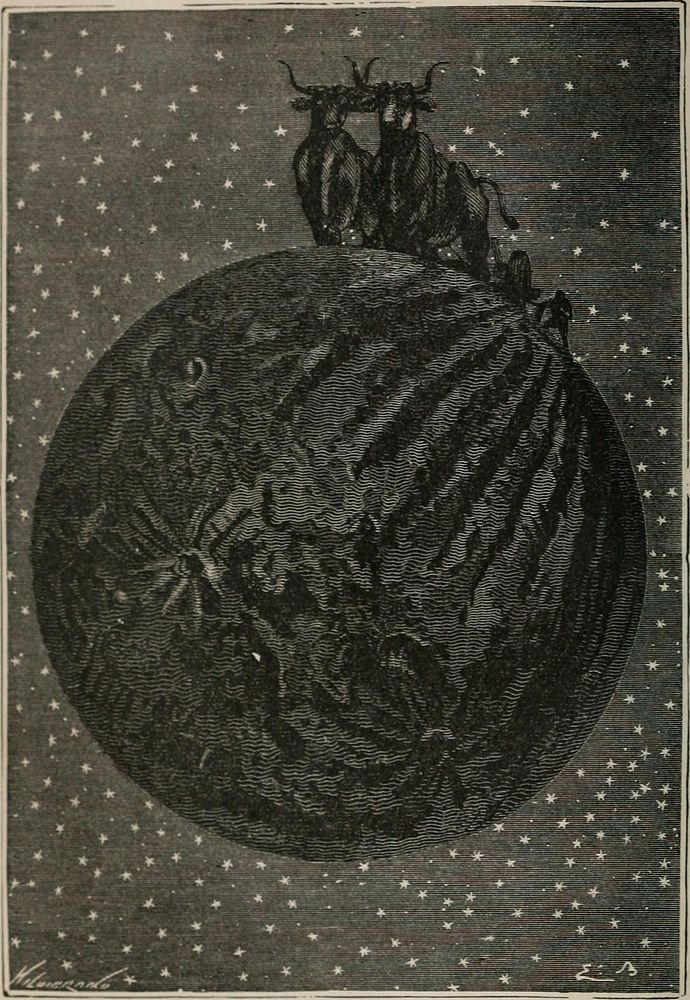https://creativecommons.org/publicdomain/zero/1.0/https://www.rawpixel.com/image/9975400

Identifier: fromearthtomoond00vern (find matches)Title: From the Earth to the Moon direct in ninety-seven hours and twenty minutes, and a trip round itYear: 1874 (1870s)Authors: Verne, Jules, 1828-1905Subjects:Publisher: New York : Scribner, ArmstrongContributing Library: University of Illinois Urbana-ChampaignDigitizing Sponsor: University of Illinois Urbana-ChampaignView Book Page: Book ViewerAbout This Book: Catalog EntryView All Images: All Images From BookClick here to view book online to see this illustration in context in a browseable online version of this book.Text Appearing Before Image:not commit anyoptical error. He considered the establishment of this fact as anacquisition to science. Now, were these shades of green, belong-ing to tropical vegetation, kept up by a low dense atmosphere?He could not yet say. Farther on, he noticed a reddish tint, quite defined. The sameshade had before been observed at the bottom of an isolatedenclosure, known by the name of Lichtenburgs circle, which issituated near the Hercynian mountains, on the borders of themoon ; but they could not tell the nature of it. Tiiey were not more fortunate with regard to another peculiarityof the disc, for they could not decide upon the cause of it. Michel Ardan was watching near the president, when henoticed long white lines, vividly lighted up by the direct rays ofthe sun. It was a succession of luminous furrows, very differentfrom the radiation of Copernicus not long before; they ranparallel with each other. Michel, with his usual readiness, hastened to exclaim,— Look there! cultivated fields!Text Appearing After Image:WHAT GIANT OXEN. rP. 245.) LUNAR LANDSCAPES. 245 Cultivated fields ! replied Nicholl, slirugging his shoulders. Ploughed, at all events, retorted Michel Ardan ; but whatlabourers those Selenites must be, and what giant oxeu they mustharness to their plough to cut such furrows ! They are not furrows, said Barbicane ; they are r\fts.^ Rifts? stuff! replied Michel mildly; but what do youmean by rifts in the scientific world ? Barbicane immediately enlightened his companion as to whathe knew about lunar rifts. He knew that they were a kind offurrow found on every part of the disc which was not mountain-ous ; that these furrows, genexally isolated, measured from 400to 500 leagues in length ; that their breadth varied from 1000to 1500 yards, and that their borders were strictly parallel; buthe knew nothing more either of their formation or their nature. Barbicane, through his glasses, observed these rifts with greatattention. He noticed that their borders were formed of steepdeclivities; thNote About ImagesPlease note that these images are extracted from scanned page images that may have been digitally enhanced for readability - coloration and appearance of these illustrations may not perfectly resemble the original work.
Original public domain image from Wikimedia Commons
Public DomainFree CC0 image for Personal and Business use